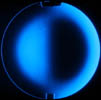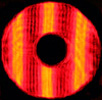August 8, 2015: A Unique Mirror
All text and images Copyright Michael E. Lockwood, all rights reserved.
I've star tested and bench tested quite a few mirrors now in the course of my career, so when I see something new, it stands out. Recently I saw a mirror that really stood out.
I was at the Winter Star Party earlier this year and I had a look through a 20" f/3.8 telescope set up next to the other telescopes in our group. At first the images seemed acceptable, but soon my attention was drawn to the peculiar intra- and extrafocal images. I upped the power to make them easier to see, and called Carl Zambuto over to have a look.
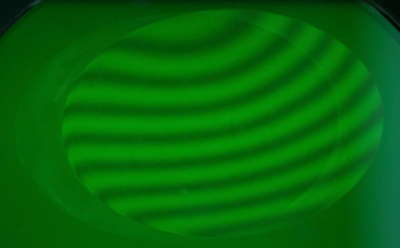
The images inside and outside of focus looked like wagon wheels. It was as if the defocused disk had been divided into sections, and it also reminded me of the ribs of a cast cellular mirror blank. I counted seven sections, which seemed somewhat evenly spaced. I had no idea what could cause such a pattern in the out of focus star images.
The owner decided to have me test the mirror, and I am including some results below.
First, though, we see the test result for the secondary mirror. This step in testing a telescope's optics is not to be overlooked because of cases like this. The interference fringes should be close to straight, but instead a curvature of over a fringe is seen, indicating an error that is well over half a wave, and close to 0.7 waves on the surface of the mirror. There is a small rolloff on the left side, but this is somewhat normal, and is why I do not recommend using the smallest secondary possible. I refigured the secondary mirror later on.
So, while the secondary was not helping the views, clearly the unique features of the primary mirror were of greater concern. Initial Foucault testing showed a rough optical surface and some curious distortions in the outer part of the mirror, around where I expected to see the reason for the out of focus star test pattern. Clearly there was something going on on that part of the mirror, but Foucault could only confirm the presence of something strange, it could not show me what it was.
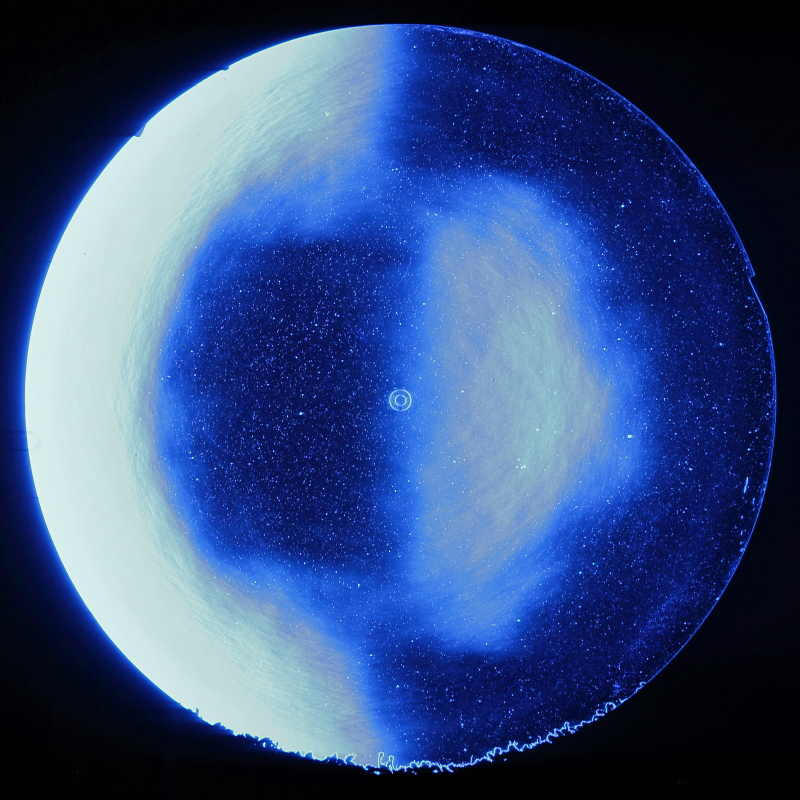
A curious pattern can be seen in a circle around the 70% zone of the mirror where the pattern changes from shadow (dark) to light. There is also smaller scale roughness, the look of fine lines or a pattern that might be left in wood by coarse sandpaper used incorrectly. Because of all of the strange features, I did not even attempt to take Foucault readings to measure the correction of the mirror because I knew the features would throw off the readings. While extremely accurate on smooth mirrors (even very fast mirrors), the Foucault test does not yield an accurate shape for a mirror when the surface of the mirror has roughness which causes spurious readings.
To solve the mystery, it was time to use the instrument detailed in the last installment of "In the Shop", the phase-shifting interferometer. Measurements taken, the results of the analysis were seen almost immediately.
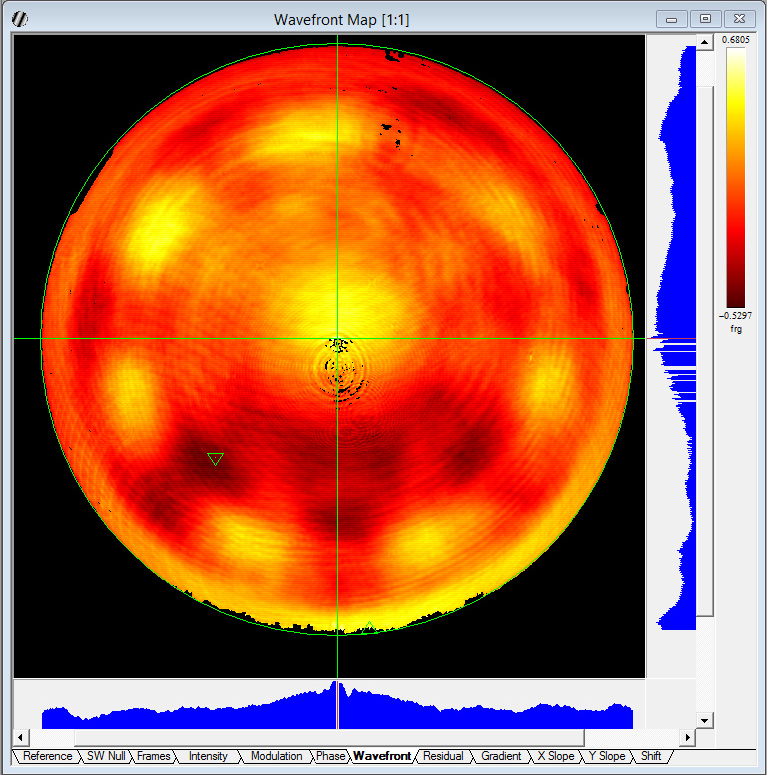
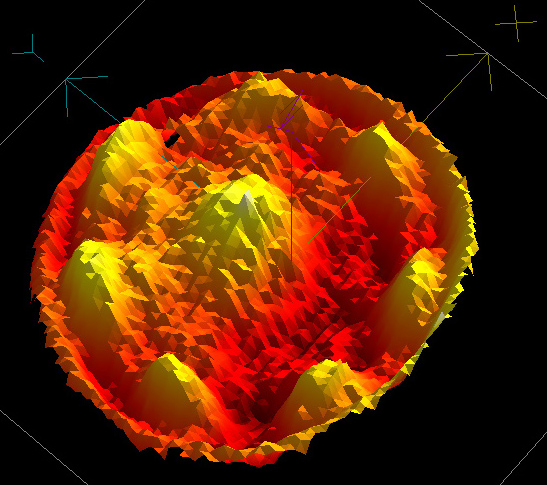 Above is the plot of
the residual error after the spherical aberration (difference between a
sphere and parabola) is removed, showing the local variations in the
mirror's figure.
The yellow areas are higher than the red areas, and the seven high
yellow spots show up nicely in this plot. They are approximately
0.5 fringes high, or 0.25 waves on the glass.
Above is the plot of
the residual error after the spherical aberration (difference between a
sphere and parabola) is removed, showing the local variations in the
mirror's figure.
The yellow areas are higher than the red areas, and the seven high
yellow spots show up nicely in this plot. They are approximately
0.5 fringes high, or 0.25 waves on the glass.The three-dimensional representation seen at the right shows the seven high spots a bit more clearly, as well as the bump in the center.
The glass itself was quite good, a test of the anneal was excellent, so clearly the glass was not at fault.
I don't quite know how the original optician managed to make these seven evenly-spaced bumps on the mirror without know about it. It would have taken some concerted effort to do, given the height of approximately 1/4 wave. It takes a while to polish 1/4 wave of glass away, so someone had to try to do it.
Speculation regarding its fabrication aside, the solution for this mirror was quite clear to me - the mirror had to be polished back to a sphere to get rid of these strange features.
So, that's what I did. I verified that it was a superb figure of revolution, and then I refigured it to my standards. I also refigured the secondary mirror. As of the writing of this article, the telescope is almost reassembled, and I'm waiting for a first light report from the owner.
If I see something even close to this unique in the future, I'll try to include it in an "In the Shop" article.
Please check back for future installments of "In the Shop".
Mike Lockwood
Lockwood Custom Optics
